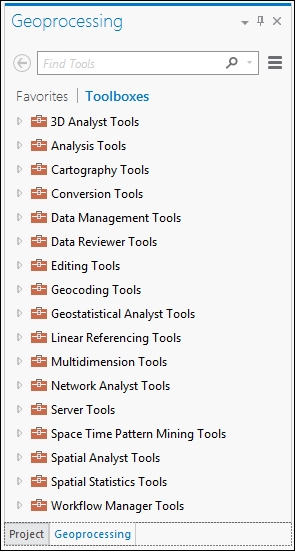If you open up the Geoprocessing toolbox in ArcGIS Desktop or Pro, you will find dozens of tools categorized in the following manner:

With these tools, you can build sophisticated models by using ModelBuilder or Python, and then publish them to ArcGIS Server. For example, to perform a buffer, as we did in Chapter 5, Geometry and Symbology, with the GeometryEngine tool, you would drag the Buffer tool onto the ModelBuilder canvas, as shown here, and specify its inputs and outputs:

Drag tools on the canvas
This model specifies an input (US cities), performs an operation (Buffer the cities), and then produces an output (Buffered cities). Conceptually, this is programming, except that the algorithm is built graphically instead of with code. You may be asking: Why would you use this tool in ArcGIS Desktop or Pro? Good question. Well, ArcGIS Runtime only comes with a few selected tools in GeometryEngine. These tools, such as the buffer method in GeometryEngine, are so common...



